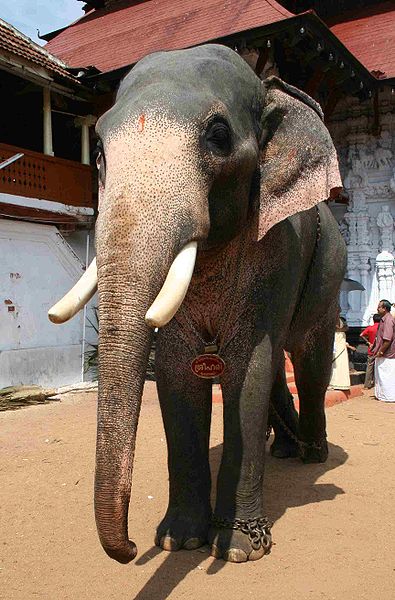Researchers have shown that elephants are able to cooperate just as well as chimpanzees, to retrieve a tray of food that can't be retrieved by one individual alone.
Elephants live in complex social groups, and are known to show cooperative behaviour like looking after other mothers' young.
As you might imagine, there is a lack of behavioural studies on elephants because they are so large and potentially quite dangerous. This study, which was published in PNAS by Joshua Plotnik and his colleagues, used a group of docile elephants at the Thai Elephant Conservation Centre in Lampang, Thailand.
The researchers modified a cooperation task test that has been in use studying primates since the 1930s. It involves having a tray with food on it, on the ground separated from the pair of elephants being tested by a fence. In order to bring the food into their reach, the elephants had to pull on the two ends of a rope attached to the table. If just one pulled on their end of the rope, it would pull the rope around the table and out of the other's reach. But if they both pulled on the ends of the rope together, the tray would move towards them and they could reach the food.
So the experimenters carried out three tests. After training the elephants individually to be able to pull the rope to get the tray, they tested the six pairs for cooperation. After the first test, which showed that when the two elephants were released into their roped off compartments, they would go forward, pull the rope together and get the tray, the question is 'well are they just doing that because we trained them to pull on a rope to get the tray', so they carried out further tests. The first was 'delayed release', where the elephants were released separately, and the first would have to wait for their partner to arrive before they could pull the rope. All the elephants showed a high success rate in learning to wait for their partner. The third scenario was to ensure the elephant was not just using the arrival of the second elephant as a cue to pull their rope, rather than understanding that their cooperation was what would bring the food. Here, one end of the rope was colied up by the tray of food, so there was no way to retrieve the food - if the elephants understood this, then the one with access to their end of the rope shouldn't bother pulling. And this is what happened, showing the elephants really were learning to cooperate to retrieve the reward.
One quite amusing thing they found was that some of the elephants in the group came up with novel ways to retrieve the food. One of them had to actually be excluded from the trial as she learned to stand on her end of the rope, so that when her partner pulled on their end, the tray moved towards them, but she had not had to do any work!










Comments
Add a comment